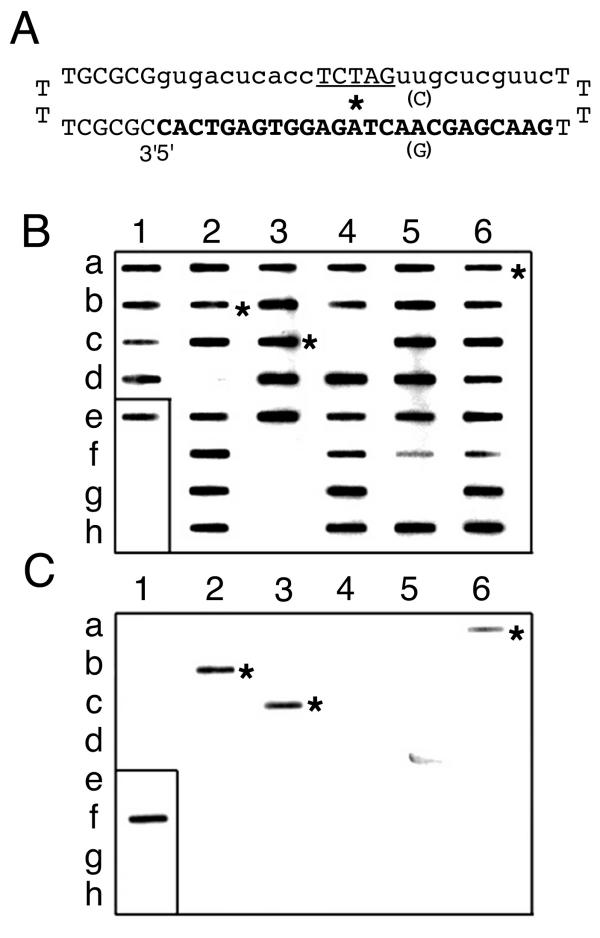Figure 4.
Chimeraplast targeting of the G551D mutation to the human CFTR gene in Hela cells. (A) The 25 bp segment homologous to CFTR is bolded, with the mutated nucleotide (G → A) indicated by asterisks. This structure is based on the traditional design with a 5 bp DNA (capitalized and underlined) core region flanked by two 10-nt 2'-O-methyl RNA stretches (lowercased). Only one base-pair change exists in parentheses for generating such an oligo for ferret CFTR. (B, C) Cell lysates prepared with 44 targeted Hela cell clones after G551D chimeric oligonucleotide transfection were amplified by 2 rounds of PCR and analyzed by ASO hybridization against (B) wild-type CFTR and (C) G551D mutant oligonucleotide probes. Three of these cell clones (2b, 3c, and 6a) were highly positive for both the wild-type and the G551D genotype, as indicated by the asterisks. Positive plasmid cDNA controls for the wild-type (1e) and the G551D (1f) CFTR sequences were also run as standards. PCR blanks are shown in 1 g and 1 h. All other wells contain experimental Hela cell clone PCR material. Wells that showed no hybridization to either probe probably contained no DNA material, which was likely due to insufficient cells for efficient PCR.

